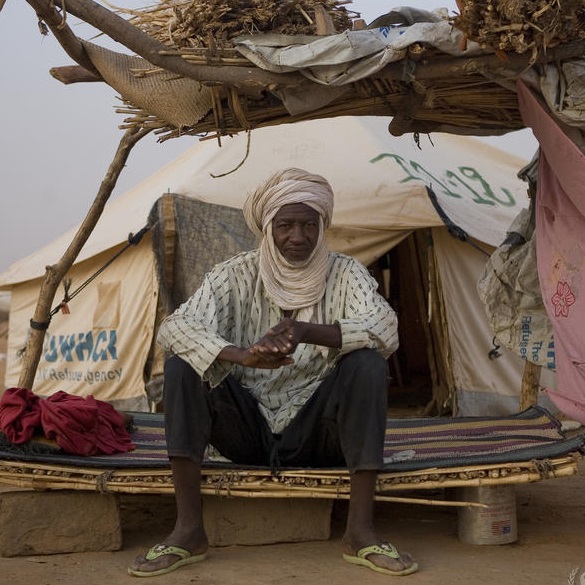WASH KAP Survey Diffa Region, Kablewa - December 2016
Niger, 2016
Get MicrodataIdentification
UNHCR_NER_2016_KAP_KABLEWA_v2.1
WASH KAP Survey Diffa Region, Kablewa - December 2016
Enquête CAP EHA (Connaissances, Attitudes et Pratiques) - 2016
| Name | Country code |
|---|---|
| Niger | NER |
The Kablewa camp was created on the 4th June 2015 to accommodate the displaced, returned and refugee Nigerians victims of the Boko Haram crisis in Nigeria.
The camp is under the mandate of UNHCR, which provides protection and assistance in terms of access to basic social services, in particular health-nutrition, water supply, hygiene and sanitation, community services, coordination of interventions and safety.
The camp population increased from 9,851 persons in June 2016 to 16,301 individuals in November 2016, following the attack of Bosso by Boko Haram which caused the displacement of several households to the Kablewa camp. This situation led to assistance needs, particularly in the Water-Hygiene-Sanitation sector.
NGO KARKARA, manager of the Kablewa Camp, in collaboration with UNHCR conducted a survey on Knowledge Attitudes and Practices on Water-Hygiene-Sanitation (179 households were interviewed). The aim was to collect information on services offered to the households and measure the level of improvement or deterioration of their living conditions. The overall result shows that the supply of quality water is assured and the quantity is satisfactory. Sanitation facilities (latrines / showers) and waste management system are available but not used by everyone.
Household
Version
2.1: Edited, anonymous dataset for licensed distribution.
Scope
The survey includes the following topics:
- Household main characteristics
- Sources of drinking and non-drinking water
- Information about water collection
- Hygiene of drinking water
- General hygiene practices
- Hand-washing habits and knowledge
- Defecation habits and latrine types
- Waste disposal
- Diarrhea
| Topic |
|---|
| Health |
| Water Sanitation Hygiene |
Coverage
Kablewa camp, region of Diffa
Producers and sponsors
| Name |
|---|
| UNHCR |
Sampling
A cluster sampling method was chosen. For each district the number of clusters depended on the number of households. Each cluster was formed by 7 households.
The random selection of households surveyed in the clusters was done as follows: to determine the number of steps, the number of households in the block was divided by 7. Then the first household surveyed in the cluster was choosen. The second household was selected adding the steps according to a determined order before the passage of the investigators and so on until the last household in the cluster.
Sample weights for the household data were computed dividing, for each neighborhood/quartier, the population by the sample size.
Survey instrument
The survey questionnaire used to collect the data consists of the following sections: General Information and Demographics, Water Collection and Storage, Drinking Water Hygiene, Hygiene, Female Hygiene, Sanitation, Sensibilisation, Diarrhoea.
Data collection
| Start | End |
|---|---|
| 2016-12-01 | 2016-12-15 |
| Name |
|---|
| ONG Karkara |
Investigators were mainly composed of camp management staff. They were all accustomed to the use of smartphones and most had experience in collecting data with the tool. To allow the interviewers to discover the questionnaire, a one-day training followed by a two-hour pre-test was delivered.
Each team consists of a supervisor and three to four investigators. The head of investigation rechecked the finalized forms and sent the data uploading the results to the server.
Data processing
Data was anonymized through decoding and local suppression.
Data Access
Cite this data as follows:
UNHCR (2016) WASH KAP Survey Diffa Region, Kablewa - December 2016. UNHCR microdata library: https://microdata.unhcr.org
Contacts
| Name | Affiliation | |
|---|---|---|
| Curation team | UNHCR | dencomdl@unhcr.org |
Metadata production
UNHCR_NER_2016_KAP_KABLEWA_DDI_v1.0
| Name |
|---|
| UNHCR |
